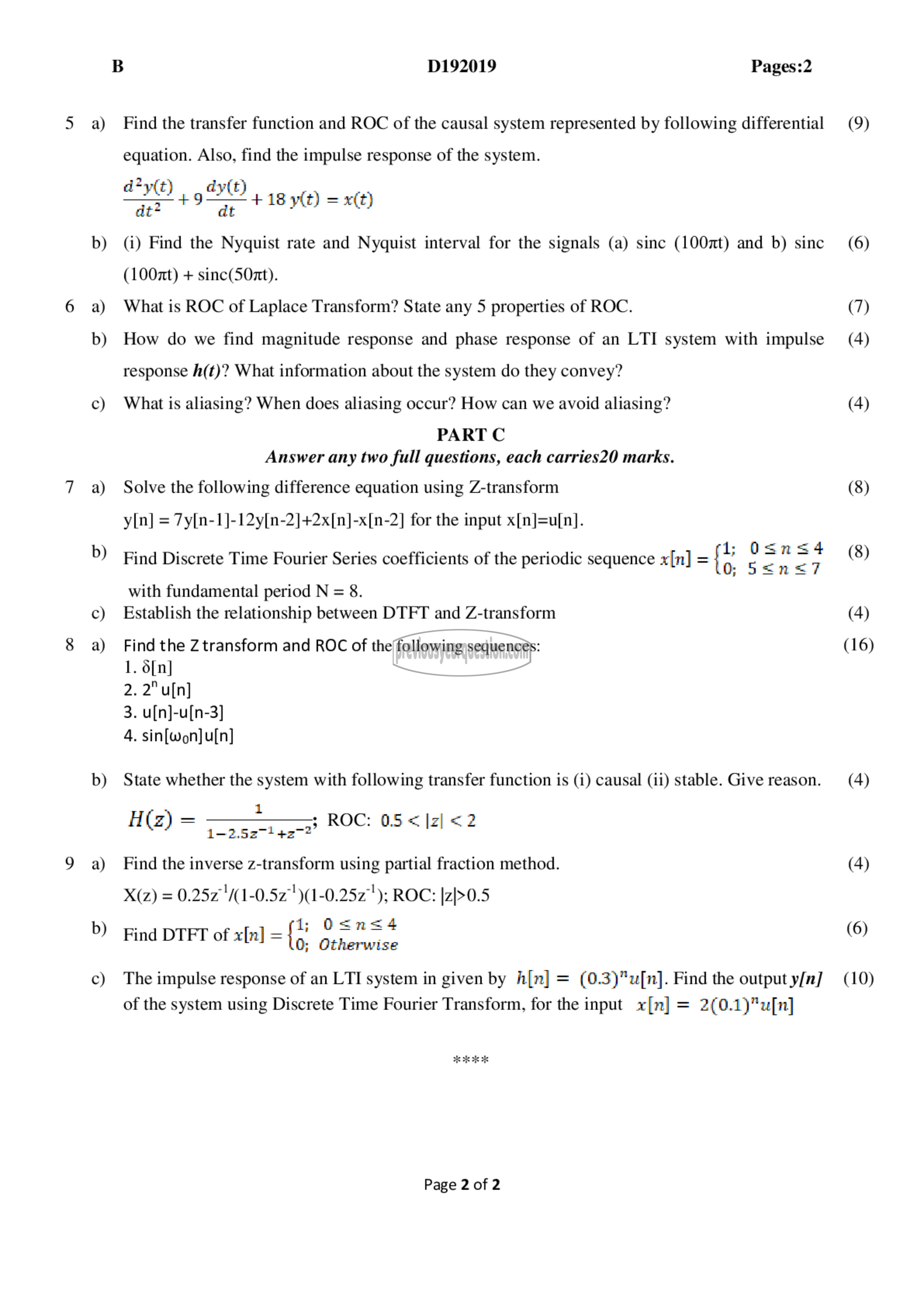APJ ABDUL KALAM TECHNOLOGICAL UNIVERSITY Previous Years Question Paper & Answer
Semester : SEMESTER 4
Subject : Signals & Systems
Year : 2019
Term : DECEMBER
Scheme : 2015 Full Time
Course Code : EC 202
Page:2
a)
b)
a)
b)
௦)
a)
b)
௦)
a)
b)
a)
b)
௦)
B D192019 Pages:2
Find the transfer function and ROC of the causal system represented by following differential
equation. Also, find the impulse response of the system.
d?y(t) ത്ഥ
ae ರ್ಯಾ 18 y(t) = x(t)
(i) Find the Nyquist rate and Nyquist interval for the signals (a) sinc (10077) and b) sinc
(10077) + sinc(SOzt).
What is ROC of Laplace Transform? State any 5 properties of ROC.
How do we find magnitude response and phase response of an LTI system with impulse
response h(t)? What information about the system do they convey?
What is aliasing? When does aliasing occur? How can we avoid aliasing?
PART ட
Answer any two full questions, each carries20 marks.
Solve the following difference equation using Z-transform
12] = 7y[n-1]-12y[n-2]+2x[n]-x[n-2] for the input x[n]=u[n].
1; Osns4
Find Discrete Time Fourier Series coefficients of the periodic sequence x[n] = { 0: S
with fundamental period N = 8.
Establish the relationship between DTFT and Z-transform
Find the Z transform and ROC of the following sequences:
1. 62]
2. 2 u[n]
3. u[n]-u[n-3]
4. sin[won]u[n]
State whether the system with following transfer function is (i) causal (ii) stable. Give reason.
H(z) =
1
ರರ ROC: 0. <
1-2.5271 +272” کا >2
Find the inverse z-transform using partial fraction method.
X(z) = 0.252 1/(1-0.52 1)(1-0.252 1); ROC: |z|>0.5
1; 0 > »: > 4
Find DTFT of x[n] = {6 Otherwise
The impulse response of an LTI system in given by A[n] = (0.3)"u[n]. Find the output y/n]
of the system using Discrete Time Fourier Transform, for the input x[m] = 2(0.1)"u[n]
TR OK KK
Page 2 of 2
(9)
(6)
(7)
(4)
(4)
(8)
(8)
(4)
(16)
(4)
(4)
(6)
(10)
